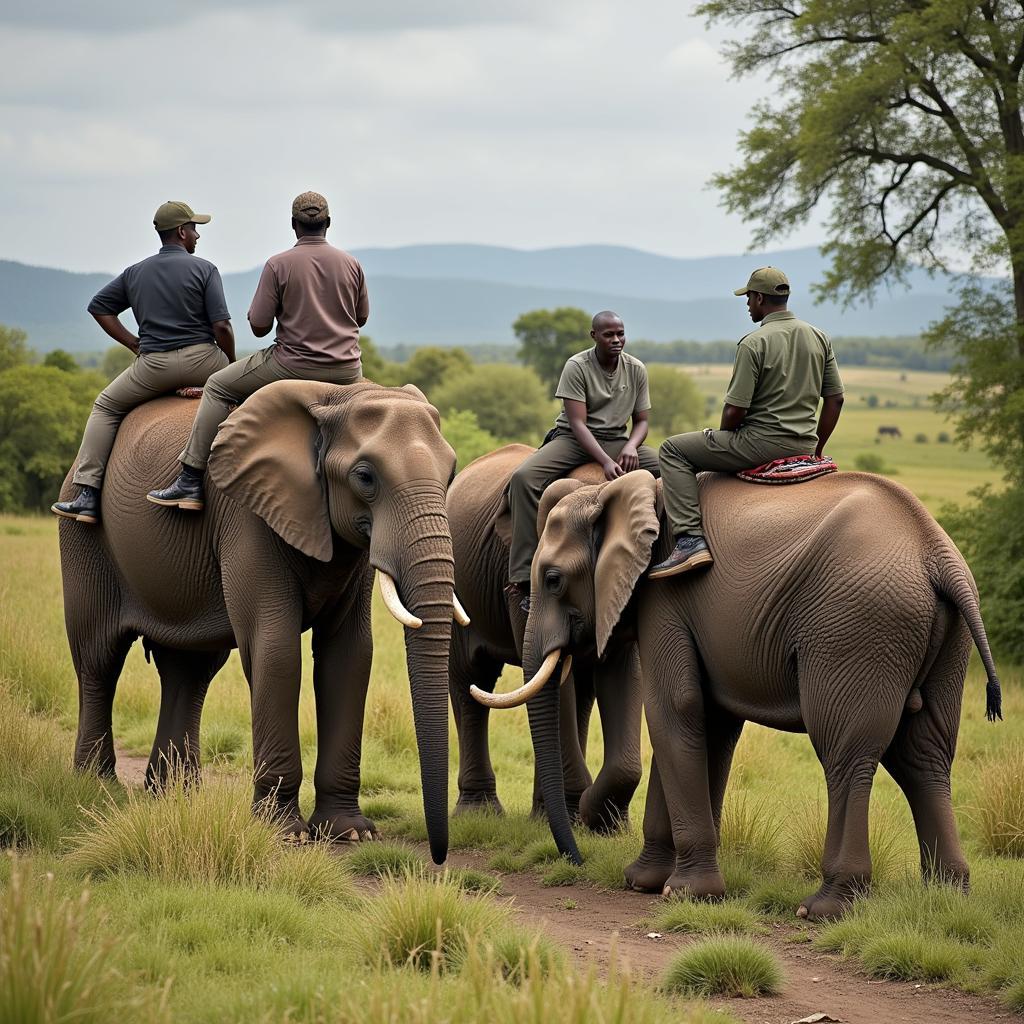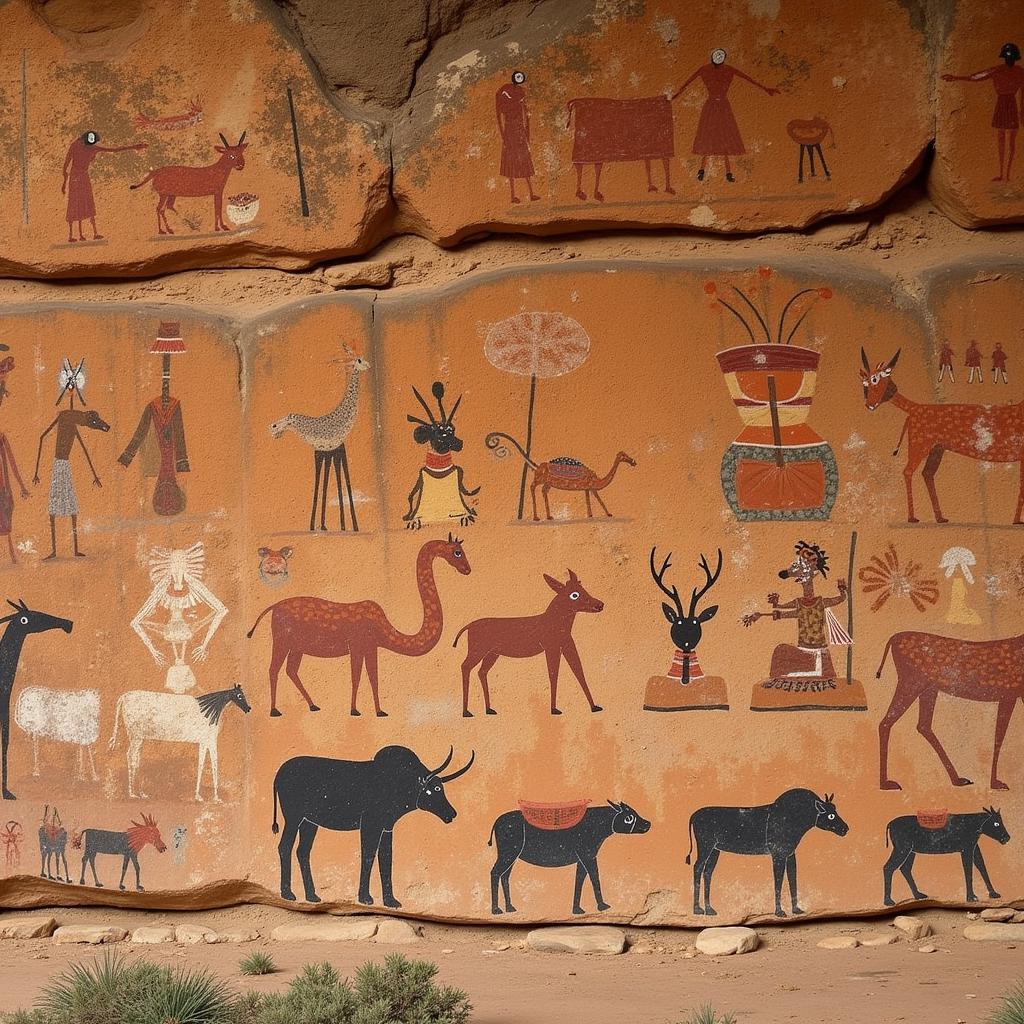African Bush vs Forest Elephant: A Giant Comparison
The African bush elephant and the African forest elephant, while both majestic creatures, possess distinct characteristics setting them apart. This article delves into the key differences between these two fascinating subspecies, exploring their physical attributes, habitats, behaviors, and conservation status. Let’s unravel the mysteries of these gentle giants and discover what makes each one unique. After reading about how much an african elephant weighs, you might be surprised by the differences between these two subspecies.
Size and Physical Features: Spotting the Differences
The most noticeable difference between the two lies in their size. The African bush elephant, the largest land animal on Earth, towers over its forest-dwelling cousin. Bush elephants boast larger ears, straighter tusks, and a concave back, while forest elephants have smaller, more rounded ears, downward-pointing tusks, and a convex back. Their distinct physical features are adaptations to their respective environments. Bush elephants utilize their large ears for thermoregulation in the hot savannas, while forest elephants navigate dense vegetation with their smaller stature and downward-pointing tusks.
Habitat and Distribution: Where They Roam
As their names suggest, the African bush elephant and the African forest elephant occupy different habitats. Bush elephants roam the vast savannas and grasslands of sub-Saharan Africa, while forest elephants inhabit the dense rainforests of Central and West Africa. This habitat differentiation plays a crucial role in their dietary preferences and social structures. For instance, understanding an african bush elephant predators requires knowing their habitat.
Diet and Feeding Habits: What’s on the Menu?
While both subspecies are herbivores, their diets vary based on the available vegetation in their respective habitats. Bush elephants primarily graze on grasses, while forest elephants browse on leaves, fruits, and bark. This dietary difference also influences their impact on the surrounding ecosystem. Forest elephants play a crucial role in seed dispersal, contributing to the biodiversity of the rainforest.
Social Structure and Behavior: Family Matters
Both subspecies exhibit complex social structures centered around female-led herds. However, forest elephant herds tend to be smaller and more cohesive than those of bush elephants. This difference is attributed to the challenges of navigating dense forests, requiring closer coordination among group members. Do you know the african elephant height in feet? Their height also plays a role in their social dynamics.
Conservation Status and Threats: Protecting the Giants
Both the African bush elephant and the African forest elephant face significant threats due to habitat loss, poaching, and human-wildlife conflict. The forest elephant is particularly vulnerable due to its restricted range and the increasing pressure on rainforest ecosystems. Conservation efforts are crucial for the survival of both subspecies.
How tall is an African bull elephant?
The height of an African bull elephant can reach impressive heights, often exceeding 10 feet at the shoulder. Knowing the african bull elephant height helps to visualize their immense size.
What’s the difference between African and Asian elephants?
There are several key distinctions between African and Asian elephants. Beyond size and ear shape, you can find a detailed comparison in this article: difference between indian elephants and african elephants.
 African Bush and Forest Elephant Conservation Efforts
African Bush and Forest Elephant Conservation Efforts
Conclusion: Appreciating the Diversity
The African bush elephant and the African forest elephant, though closely related, are distinct subspecies with unique adaptations to their respective environments. Understanding these differences is vital for effective conservation efforts. By appreciating the diversity of these magnificent creatures, we can work towards ensuring their survival for generations to come. Understanding the differences between the African Bush Vs Forest Elephant allows us to appreciate their unique roles in the African ecosystem.
FAQ: Frequently Asked Questions about African Elephants
- What is the main difference between African bush and forest elephants? Size and habitat are the primary distinctions.
- Which is bigger, the bush or forest elephant? The African bush elephant is the larger of the two.
- Where do forest elephants live? They inhabit the dense rainforests of Central and West Africa.
- What do bush elephants eat? Their diet primarily consists of grasses.
- Are African elephants endangered? Both subspecies are facing significant threats and are considered vulnerable or endangered.
- How can I help protect African elephants? Supporting conservation organizations and spreading awareness are important steps.
- What are the main threats to African elephants? Poaching, habitat loss, and human-wildlife conflict pose the greatest dangers.
Common Scenarios and Questions
-
Scenario: You are on a safari in Africa and want to know which elephant species you are observing.
-
Question: How can I tell the difference between a bush and forest elephant in the wild?
-
Scenario: You are researching the impact of habitat loss on African elephants.
-
Question: How does deforestation affect both bush and forest elephants differently?
-
Scenario: You are interested in supporting elephant conservation efforts.
-
Question: Which organizations are working to protect African elephants and their habitats?
Further Exploration
For more information on related topics, you may find the following helpful:
- Are there other subspecies of African elephants?
- How do elephant social structures compare to other large mammals?
- What are the latest research findings on elephant communication and intelligence?
For any assistance, please contact us at: Phone: +255768904061, Email: [email protected] or visit us at: Mbarali DC Mawindi, Kangaga, Tanzania. We have a 24/7 customer service team.


